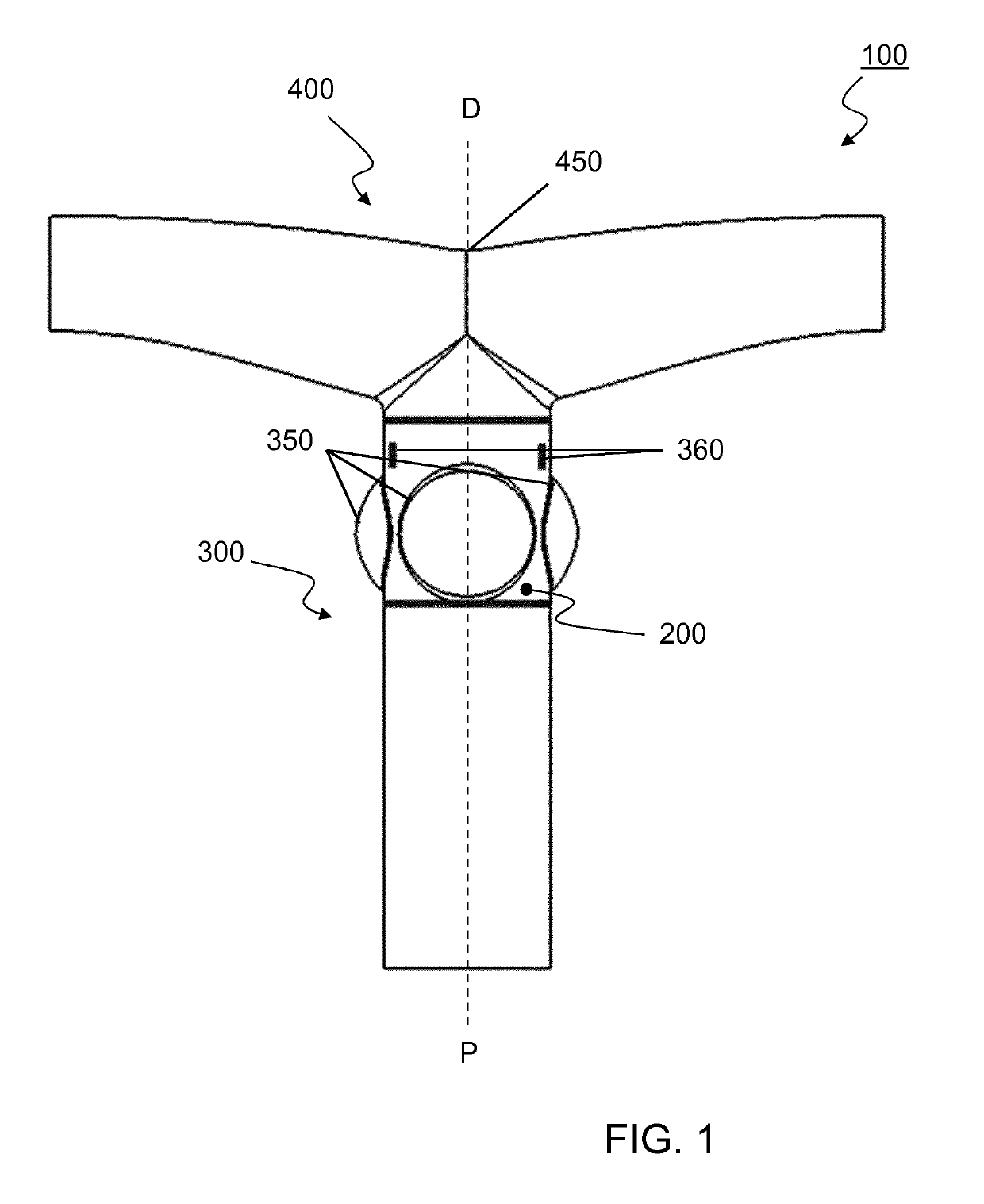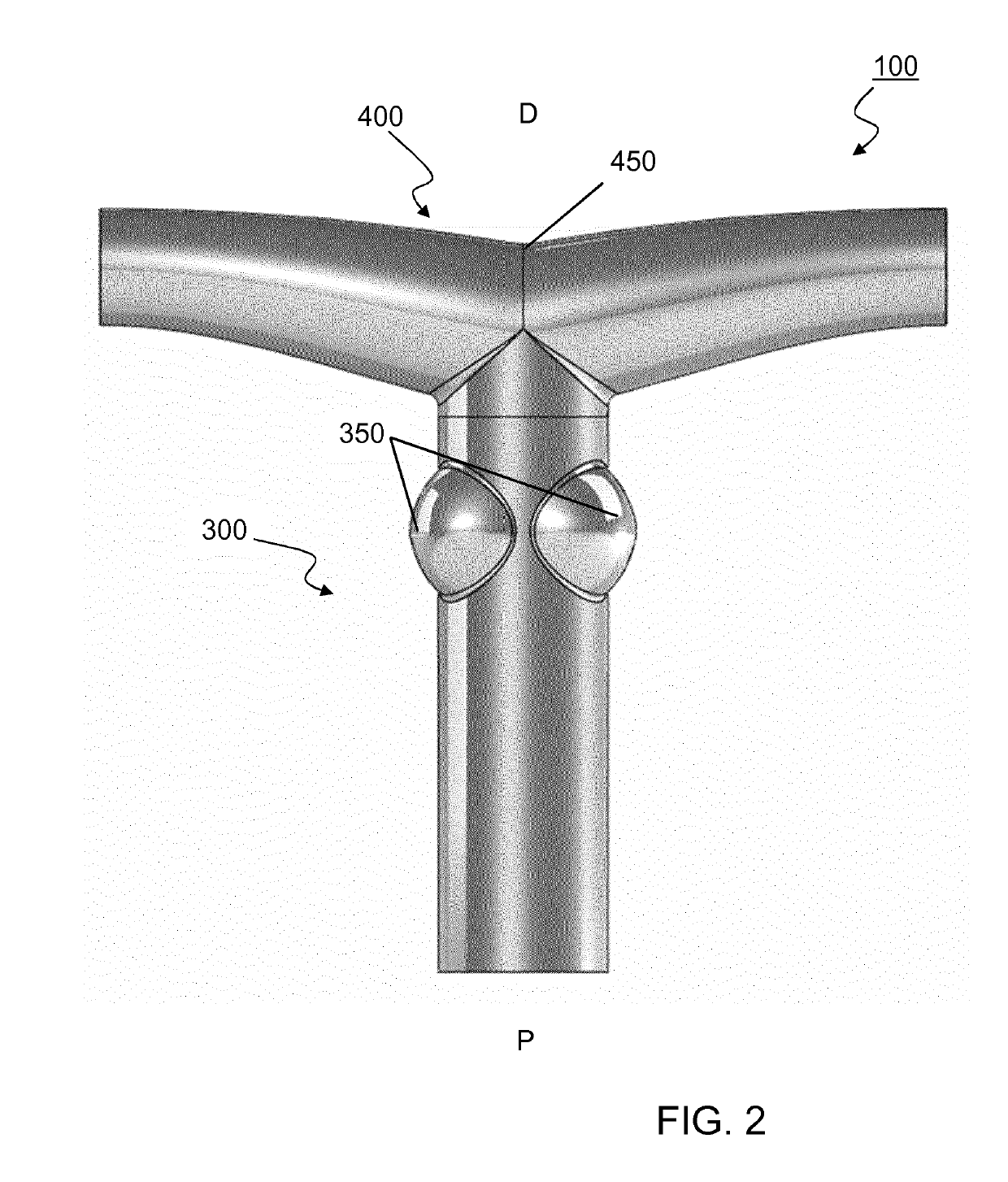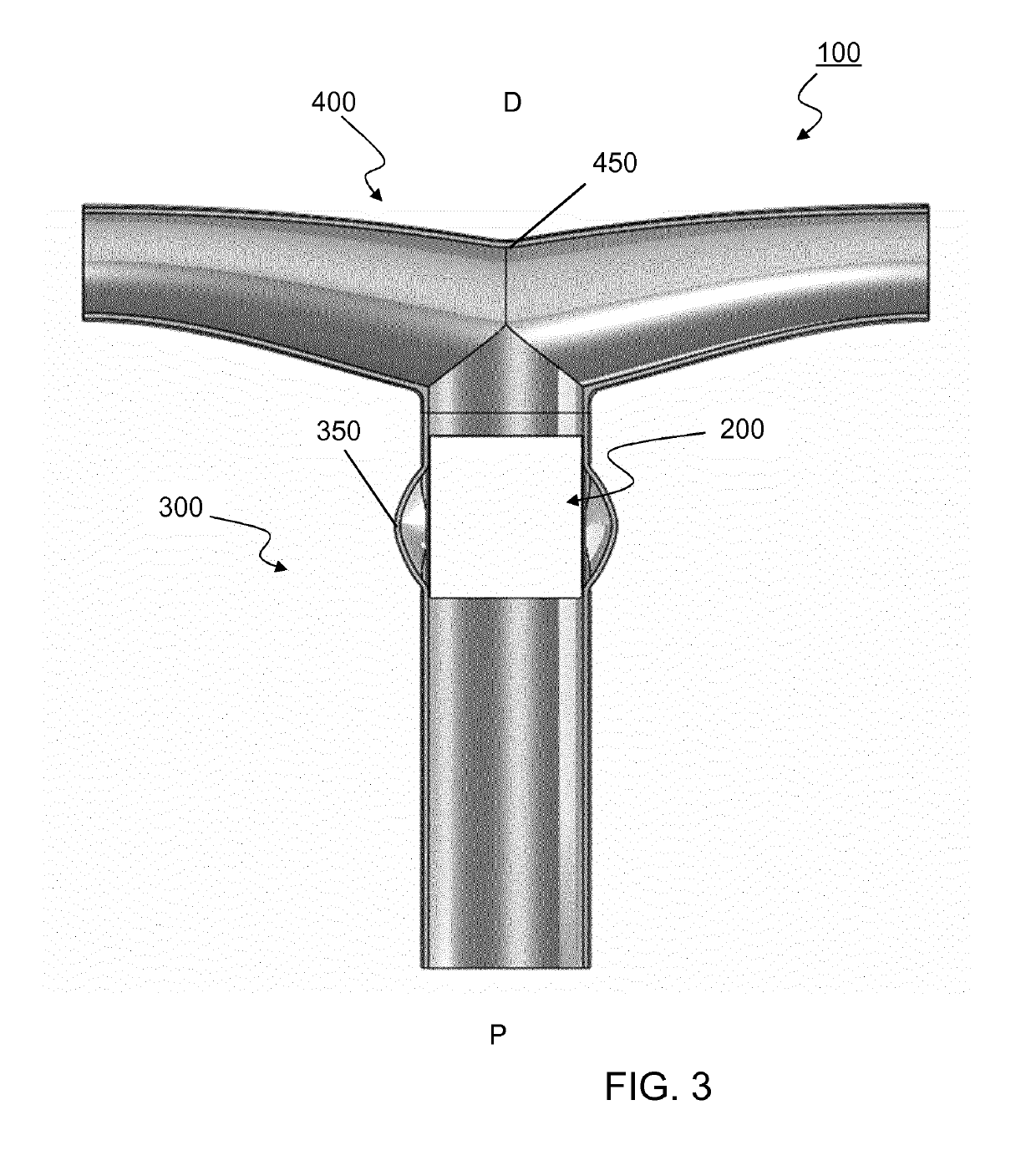Vascular Valved Prosthesis and Manufacturing Method
a vascular valve and prosthesis technology, applied in the field of fully biodegradable vascular valve prosthesis, can solve the problems of increasing the risk of infection, creating life-threatening conditions, severe disability of patients, etc., and achieve the effect of easy removal
- Summary
- Abstract
- Description
- Claims
- Application Information
AI Technical Summary
Benefits of technology
Problems solved by technology
Method used
Image
Examples
example 1
s and Dimensions of an Electrospun Vascular Valved Prosthesis
[0253]A vascular valved prosthesis as described in the present invention may be manufactured with different parameters and may thus be obtained in different dimensions. In an example, a T-shaped vascular valved prosthesis with a diameter of about 18 mm comprises an inner, outer and T-shaped conduit affixed together through an attachment. To better illustrate the example, a reference is made to FIGS. 11 and 12, which demonstrate a tubular vascular valved prosthesis from several perspectives; and FIGS. 13, 14 and 15, which similarly demonstrate a T-shaped vascular valved prosthesis.
[0254]The inner conduit of the T-shaped vascular valved prosthesis with a diameter of about 18 mm displays the following properties:[0255]The internal diameter of the inner conduit is 18 mm.[0256]The length of the inner conduit is 20 mm.[0257]The thickness of the inner conduit is between 0.05 and 0.3 mm, preferably around 0.1 mm.[0258]The linear e...
example 2
s and Dimensions of a Mandrel for Electrospinning a Vascular Prosthesis
[0296]FIGS. 6 and 17 demonstrate a mandrel (600) for electrospinning an outer conduit comprising the following dimensions:[0297]The cylindrical mandrel core (620) has a diameter of 14 mm.[0298]The cylindrical mandrel core (620) encapsulated by shell pieces has a diameter of 18 mm.[0299]The upper and lower fixation means (660), which are affixed to the cylindrical mandrel core (620) encapsulated by shell pieces (640), each have a diameter of 22 mm.[0300]The upper and lower fixation means (660) each have a length of 40 mm.[0301]The shell pieces (640) each have a length of 150 mm.[0302]The operable electrospinning distance on the shell pieces situated between the upper and lower fixation means (660) is 120 mm.[0303]The cylindrical mandrel core has a length of 295.5 mm.[0304]The upper and lower fixation means (660) have a length of 40 mm.[0305]The upper and lower fixation means (660) have a length of 40 mm.
[0306]Thes...
example 3
r the Manufactory of a Vascular Valved Prosthesis Comprising a T-Shaped Bifurcation Using a Mandrel for Electrospinning
[0308]As an example of a method for manufactory of a T-shaped vascular valved prosthesis (100) using a mandrel for electrospinning we refer to FIGS. 5-7 and 16-18. Respectively, FIGS. 5 and 16 demonstrate a schematic and an assembly of mandrel (600) for electrospinning the inner conduit (200); FIGS. 6 and 17 similarly demonstrate a mandrel (600) for electrospinning the outer conduit (300); and FIGS. 7 and 18 similarly demonstrate a mandrel (700) for electrospinning the T-shaped conduit (400).
[0309]The vascular valved prosthesis comprising a T-shaped bifurcation is manufactured by comprising the following steps:
(1) Solubilizing a polymer in an appropriate solvent for electrospinning, preferably 1,1,1,3,3,3-Hexafluoro-2-propanol preferably with a weight / volume concentration between 5-15% w / v.
(2) Electrospinning an inner conduit, an outer conduit and a T-shaped conduit...
PUM
| Property | Measurement | Unit |
|---|---|---|
| Young's modulus | aaaaa | aaaaa |
| Young's modulus | aaaaa | aaaaa |
| diameter | aaaaa | aaaaa |
Abstract
Description
Claims
Application Information
 Login to View More
Login to View More - R&D
- Intellectual Property
- Life Sciences
- Materials
- Tech Scout
- Unparalleled Data Quality
- Higher Quality Content
- 60% Fewer Hallucinations
Browse by: Latest US Patents, China's latest patents, Technical Efficacy Thesaurus, Application Domain, Technology Topic, Popular Technical Reports.
© 2025 PatSnap. All rights reserved.Legal|Privacy policy|Modern Slavery Act Transparency Statement|Sitemap|About US| Contact US: help@patsnap.com



